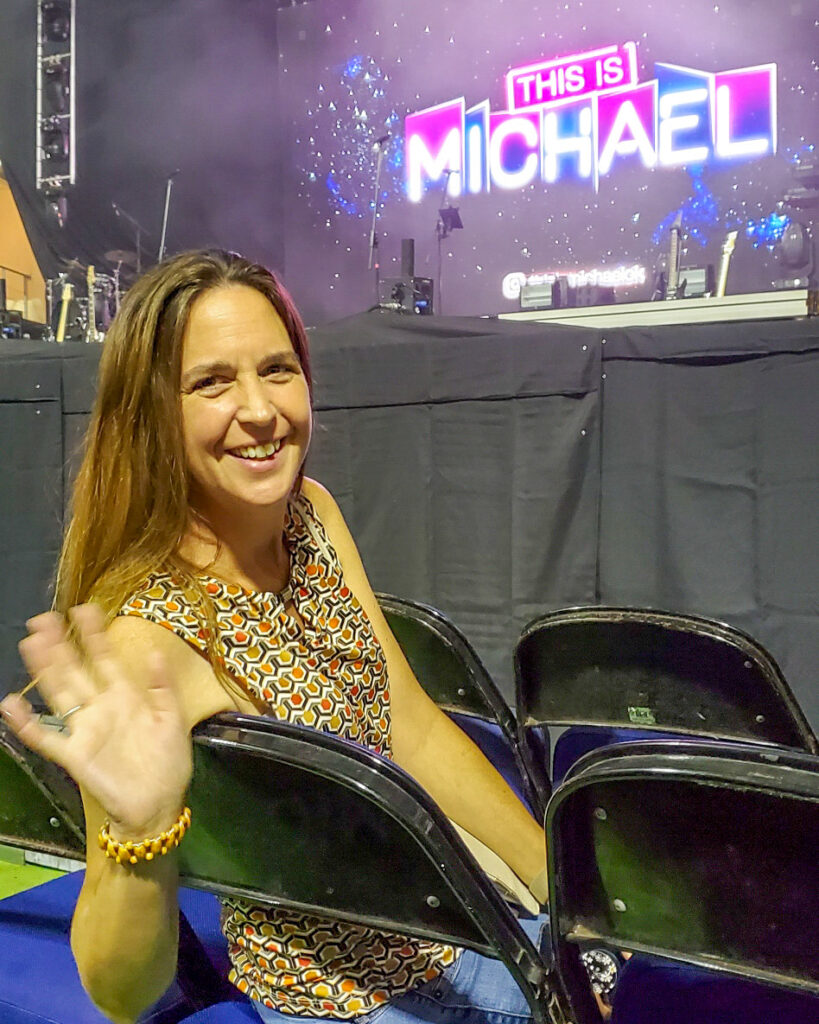For decades, Melissa James woke each morning wondering which of her symptoms would show up that day, a sort of disease roulette as she calls it. A headache was most consistent, but aural fullness or pressure and tinnitus (ringing in the ear) were also very common. A visit to the Washington University Dizziness and Balance Clinic and neurotologist Nedim Durakovic, MD, changed that.

James also suffered from balance problems and felt she had very sensitive hearing. She often noticed the sounds her own body was making – her heartbeat and footsteps were pronounced and at times could even hear herself blink. Noisy environments like concerts and crowded restaurants caused visual disturbances, so much she would often have to close her eyes during the louder scenes of a movie.
An analytical chemist, James attributed her symptoms to spending too much time looking through a microscope, childhood hip dysplasia, and aging.
As she turned 50 and her tinnitus worsened, she decided to seek medical attention. Her general practitioner referred her to local ENT specialist and WashU alum Robert O’Bert, MD. O’Bert quickly recognized James’ symptoms and referred her to Durakovic.
Durakovic confirmed James suffered from a condition known as superior canal dehiscence or SCD, a hole in the bony wall of the superior semicircular canal, one of three canals in the inner ear responsible for detecting angular movements of the head.
Symptoms of SCD can provide a unique guide to diagnosis

According to Durakovic, James exhibited classic symptoms of SCD – tinnitus, aural fullness, balance problems, and autophony or hearing one’s own bodily sounds. Loud music or noise can also cause patients to experience vertigo, the sensation of movement when none is present, or oscillopsia, the perception that objects in the visual field are moving.
“The lack of a bony barrier changes the impedance of the inner ear, allowing sound to enter more easily,” he explained. “This not only makes the patient’s hearing more sensitive, the location of the dehiscence allows sound energy to excite vestibular hair cells which are normally only responsive to head movements, resulting in balance and visual symptoms.”
A specialized test for vestibular disorders called a VEMP or vestibular-evoked myogenic potential was key to confirming the diagnosis suggested by James’ CT scans. The VEMP can assess function of the balance organs by presenting sound to the ear while measuring changes to neck and eye muscle tension. The VEMP is a critical test of vestibular physiology that confirms the clinical history, physical exam, and radiographic findings that are consistent with SCD.
Washington University clinical audiologists Belinda Sinks and Lauren English specialize in vestibular testing and confirmed the diagnosis of SCD with VEMP testing.
“The experience of our audiologists and advanced test equipment is unique to our clinic,” said Durakovic. “It is truly a world class operation and something you won’t find elsewhere in the broader St. Louis area.”

Resolution of symptoms was quick and substantial
Although SCD affected both ears, James’ right ear was worse and the one chosen for surgery. Durakovic accessed the superior canal through the temporal bone and plugged the hole using bits of bone and fascia harvested from James’ skull.
Her symptoms resolved immediately, and she still gets emotional thinking about how her life has changed.
“I can now attend concerts and even action films without worry,” she says. “I used to avoid crowded noisy situations, and now I enjoy them. I get to travel and experience all kinds of stimulating environments.”
James has not woken with a headache since surgery, and any residual symptoms caused by dehiscence in the left ear are relatively very minor. She hopes others with this condition will see her story and realize that help is available.
If you or someone you know experiences symptoms similar to those described here, call 314-362-7509 to schedule an evaluation with one of our specialists.
